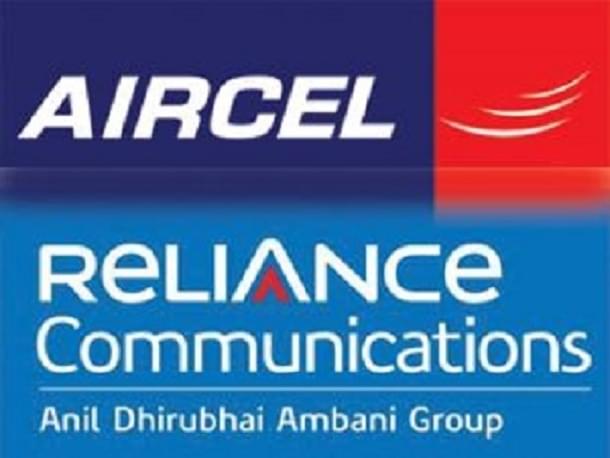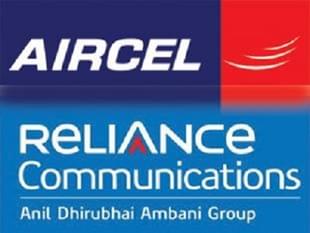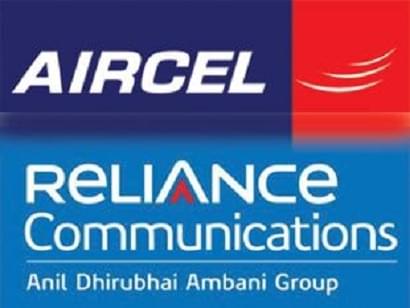Business
Why The Three-Way Merger Between RCom, Aircel And MTS Is Unlikely To Work
R Jagannathan
Dec 23, 2015, 05:23 PM | Updated Feb 12, 2016, 05:33 PM IST
Save & read from anywhere!
Bookmark stories for easy access on any device or the Swarajya app.


Are mergers the best idea in Indian telecom for a consolidation?
There is little doubt that Indian telecom is overdue for a consolidation, with the weaker players either merging or being sold to the stronger ones.
Even so, one needs to take the announcement made yesterday (22 December), that talks are underway between the Anil Ambani-owned Reliance Communications (RCom) and Aircel, owned by a Malaysian Indian entrepreneur, with a heavy dose of salt.

And remember, this is not intended to be just a cosy twosome; with MTS (Sistema Shyam Teleservices) and RCom announcing an all-stock merger last month, this will be a menage a trois – an unstable arrangement at the best of times.
The problem with mergers and acquisitions (M&As) is that two plus two do not usually add up to four, leave alone five, which is what synergy expectations will be about. RCom plus Aircel plus MTS may not amount to even one plus one plus one (ie, three), but something well below three.
The reason is simple: to work, mergers need chemistry more than arithmetic. Mergers are about people and corporate cultures meshing well. In most cases that does not happen.
It is all very well to say that adding RCom, Aircel and MTS will create India’s second largest telecom company with a possible 202 million subscribers, behind Bharti Airtel’s 235 million, Vodafone’s 189 million and Idea’s 167 million, as Business Standard informs us.
Quite apart from the fact that by the time the merger happens, the top three would have grown even more, leaving the merged entity’s expected No 2 status in some doubt, the question to ponder over is whether a merger between the businesses of an Indian promoter, a Malaysian businessman and a Russian plutocrat can really work?
Just as a marriage between an Eagle and a Lion will not produce a Flying Eaglion, we should think what kind of progeny this alliance will produce.
It can work only if it is clear who owns the final company and who calls the shots. It makes sense if the idea of merger is to let the minor shareholders leave once economies of scale are created. It cannot work if all three partners think they need to drive the vehicle or have one hand on the steering.
The second issue relates to the logic of the merger. Given the high cost of spectrum acquisition, and growing competition for data services, some complementarity can be assumed among the three partners on focus areas and strengths. MTS does largely data, while Aircel and RCom are in both voice and data, 2G and 3G. But 4G is the prize to fight for next.
The merger will work only by sharpening focus on customer segments that are growing and profitable, not by trying to add up existing businesses and arriving at a big theoretical total. In other words, the combined entity has to shed some business and grow others to be focused.
This is not going to be easy when they don’t even share the same underlying technology. The three follow two different technologies, GSM and CDMA, with RCom doing both. GSM dominates Indian telecom, and CDMA is losing traction.
Third, there is the larger question of whether this is a merger of strong players or weak ones. Two drunks can prop each other and call it synergy, when all it may take is a quick shake to knock them both out. RCom and Aircel are No 4 and No 5 in the Indian telecom space, while MTS is way down the pecking order.
If fear of the entry of Reliance Jio shortly is the major factor driving this merger, a wedding between Mr 4, Ms 5 and Mr Nowhere is not going to give it the heft to rise to the top. Reason: it takes up to two years to make a merger work, and then some.
This means just when competition is growing sharper, and the need for customer focus greater, the triple-headed new entity will be focused on internal issues, fixing its plumbing, technology, finances and rationalising its customer base.
Fourth, debt could well do them apart. RCom itself has nearly Rs 40,000 crore of debt, to reduce which it is trying to offload its towers business. This is far from a done deal, and it is worth recalling that expectations of a valuation of Rs 20,000-22,000 crore from the towers business may be a bit overblown. High valuation expectations have ensured that the deal has been elusive for more than four years now. No deal on debt means the merger could be off even before it is consummated.
Worldwide, more than half the mergers fail even when only two parties are involved. This time, the chances of success have reduced further with the addition of a third player. Focus, and not size, is important to success.
In a telecom industry where ARPUs (average revenues per user) are still low (in the quarter to June 2015, average ARPUs were just Rs 126 per customer per month), large segments of the industry are simply unviable, especially since further growth can only come from data (where revenues can be more robust, but need more investments in towers and technology) or by expanding the base.
New subscriber growth can only come from the poorer regions of India, since we already have one billion wireless consumers in a country with a total population of 1.25 billion. Future revenue growth depends on raising ARPUs, a scenario we can rule out for the next two years when Reliance Jio will be trying to drop prices to grab customers.
Reliance Jio needs at least 100 million customers to be a serious player, and these can only come from the weaker players losing their best customers. Not exactly the best scenario for the three hopefuls planning a polyamorous wedding.
Of course, it is possible that Aircel or MTS are really selling out in the guise of merger, but RCom simply has too much debt on its books to buy the promoters of Aircel out. Hence the preference for merger over a buyout.
The most logical thing to do for the weak players is to exit, which means selling to the highest bidder and not merging with those who can’t afford to buy. In this case, it would be Bharti, Vodafone, Idea or even Reliance Jio.
The chances are the three-way merger is only the second-best idea for consolidation. The best idea is a clean and simple sale to the highest bidders, assuming they are interested.
Jagannathan is former Editorial Director, Swarajya. He tweets at @TheJaggi.





